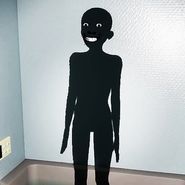
In the extensive domain of the digital sphere, where aspirations frequently intertwine with actuality, arises a distinctive entity recognized as Misleading Vision. This mysterious notion questions the fundamental structure of our understandings, beckoning us to explore the blurred boundaries between illusion and authenticity.
At its core, False Dream serves as a metaphorical gateway to the unexplored territories of our minds, a realm where the conventional norms of reality are suspended, and imagination takes center stage. This digital dreamscape invites individuals to unshackle themselves from the constraints of societal expectations, offering an unfiltered glimpse into the recesses of their subconscious.
In this alternate reality, the traditional obstacles that restrict dreams are disassembled. False Dream becomes a catalyst for creativity, pushing individuals to defy the limitations imposed by the waking world. It is a canvas where the surreal coexists with the rational, and where the unfathomable depths of human imagination are given free rein.
Navigating through the ethereal landscapes of False Dream, one encounters a symphony of vibrant colors, surreal landscapes, and fantastical creatures that defy the laws of nature. It is a dreamscape unbound by the constraints of logic, where the impossible becomes possible, and the inconceivable becomes reality.
Yet, amidst the kaleidoscope of fantastical elements, game poses profound questions about the nature of truth and perception. Is reality merely a construct of our collective imagination, and are dreams an unfiltered glimpse into a realm where falsehoods can be unblocked?
As users traverse this digital dreamscape, they find themselves confronted with mirror-like reflections of their deepest desires, fears, and aspirations. False Dream becomes a mirror that reflects not only the contours of individual dreams but also the collective dreams of a society yearning for unfiltered self-expression.